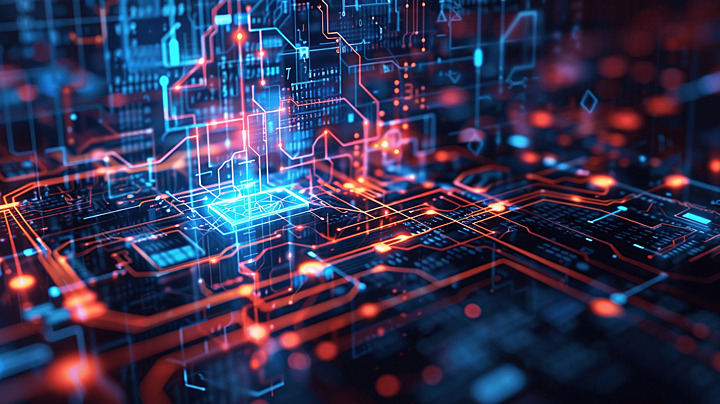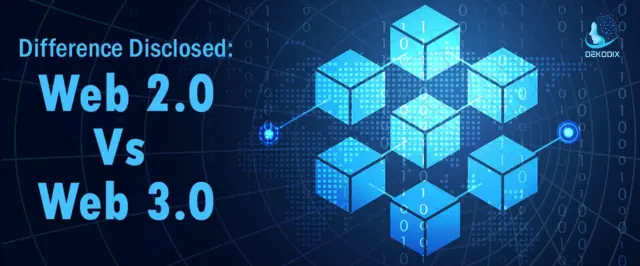The Next Digital Frontier for Businesses
Introduction: Web2 vs Web3 Comparison
In this Web2 vs Web3, The Internet has a history of its own. Web1.0 was a static, read-only environment that was long ago. Web2.0 emerged in the following years, bringing user-generated content and interactive experiences to the forefront. Web3.0 is coming, bringing the promise of decentralization, site ownership, and user-controlled rewards programs.
Any company that wants to stay relevant must understand the Web2 vs Web3 comparison; this is not a one-off. Web3.0 goes further, offering decentralized control, enhanced security, and ownership of data. Web2.0, on the other hand, does not change the way we participate, share, or communicate. This article explores the Web2 vs Web3 comparison. It explains how Dekodix is helping organizations embrace the bold new digital era through blockchain integration, decentralized applications (DApps), and innovative digital marketing strategies.
What is Web2.0?
A web that facilitates conversations with users but doesn’t give them a mouse
Web 2.0 was revolutionary; it marked a shift by companies like Facebook and Google from creating content for people to creating content interactively rather than passively consuming it. Unfortunately, as more and more information is exchanged through these centralized companies (social networks like Facebook or Google), control shifts from us to them.
Web2 vs Web3 comparison, this phase allows us to see how Web2.0 is centralized but driven by participation; your data belongs to the platform, and your content may generate revenue through unsolicited advertising – all of which are critical steps towards a self-sufficient future.
Key Features of Web 2.0
All power rests on centrally controlled platforms like Facebook and YouTube. Through these services, your material and personal information goes directly to their bank accounts instead of yours, increasing their profit margins instead of yours.
Web2.0 is built on user-generated content, including social media updates, blogs, and video uploads. Businesses often profit from you through advertising; they track every click and like you receive and make money from your interactions with them.
These are some examples of Web2.0 applications:
- Facebook: It’s the most powerful social network, and a few dominant companies operate it.
- YouTube: an online video hosting platform that earns money primarily from user-generated videos posted by users and viewers.
- Wikipedia: is a user-run online knowledge-sharing platform that is still centrally hosted and managed.
What is Web3.0?
Internet Revolution: Restoring Power to the People
Web3.0 is the turning point between Web2.0 vs Web3.0, promising an open, decentralized web where users own their digital assets and personal data, shifting power from the few to the many.
Web3.0’s Key Features
- Blockchain-based Decentralization: Your data is not controlled by a single entity. Blockchain guarantees that only people, not platforms, own the information.
- Better User Control: Thanks to the security of blockchain technology, Web3.0 gives consumers more control over who has access to their personal information, eliminating privacy concerns.
- AI and machine learning: content and services are now more customized than ever before. They now rely on decentralized intelligence.
Examples of Web3.0 Applications
- Blockchain:0 is built on blockchain technology, emphasizing that decentralization is essential for transparency.
- DApps: This application programming revolution was led by Bitcoin and Ethereum. DApps operate in a decentralized manner.
- Cryptocurrencies:0 relies on cryptocurrencies such as Ethereum and Bitcoin, representing digital payments.
3. The Core Differences Between Web2.0 and Web3.0
Web2 vs Web3 Comparison: Centralization vs. Decentralization
Web2 vs Web3 comparison differs significantly from Web2.0 regarding data management: Web2.0 relies on centralized businesses for storage, but Web3.0 uses blockchain integration to decentralize control and prevent one person from having complete power.
Ownership of Data Storage Systems
In Web2.0, data becomes a commodity; companies collect, process, and resell data. However, with Web3.0, you are in control of your information! Thanks to decentralization, users have greater control over who can access and use their information and how it is used.
Privacy and Security
Web2.0 databases are often the target of security breaches; databases that use centralized storage are particularly vulnerable. Web3.0 blockchain technology ensures enhanced security by distributing and encrypting data to reduce the likelihood of hacker attacks.
Revenue Model
Advertising drives the Web2.0 economy; platforms make money by having you produce content. However, Web3.0 offers users a variety of ways to make money; token economies, cryptocurrencies, and decentralized finance (DeFi) are just a few of them.
Global trade agreements will rely heavily on interoperability and intelligent contracts
Unlike their Web2.0 traditional third-party systems, Web3.0 smart contracts enable trustless automated transactions based on blockchain without intermediaries, making transactions safer and more transparent.
Advantages of Web3.0 Over Web2.0
Web2 vs Web3 Comparison: Why Web3.0 Wins the Battle
Web3.0 puts privacy, security, and control first. Blockchain technology keeps data safe, while people have power over things like NFTs, so security is always at risk.
Rights to own digital assets
An essential between Web2 vs Web3 comparison is that Web3.0’s NFTs let producers and artists own their work without being hindered by agents or limiting their freedom of expression.
Decentralized Applications (DApps)
As part of Web3.0, decentralized networks enable DApps to run more securely, providing more choices for users and companies. This makes the connection between customer experience and business actions more transparent.
Get rid of censorship
Because Web 2.0 centralization gives, governments and businesses can block content. The law gives these groups this power, but Web3.0 decentralization reduces this control, making the network more open and fair.
Challenges of Web3.0: The Road Less Traveled
Overcoming Adoption Hurdles in the Web2 vs Web3 Comparison
It takes a long time to learn how to use Web3.0 adoption. It has great promise, but because it is so complex, it may take longer than we think to be widely used.
How to scale
One of the hardest things about Web3.0 is scaling an open network. Ensuring that the network is efficient and fast as it grows is essential for the excellent development of Web3.0 platforms.
How much energy is used
A big problem with Web3.0’s scalability is that blockchain networks harm the environment, especially for cryptocurrencies that consume much energy, such as Bitcoin.
Regulatory issues
It is up to the government to decide how to run a decentralized system. This can lead to issues that hinder of Web3.0 adoption.
How Dekodix Bridges Web2.0 and Web3.0
Get leads using current tools
Dekodix not only saw this trend but also supported it. We found leads on Twitch, Discord, and Reddit. We bridged the gap between Web2.0 vs Web3.0.
Dekodix Service Launched
- The Web3.0 solutions provided by Dekodix go beyond this idea. Businesses can easily transition from Web2.0 to Web3.0 with Dekodix for digital marketing, blockchain integration, or DApp development.
- Using blockchain Integration services, we help businesses reduce centralization and return power to the people.
- Dekodix Web 3.0 Solutions: Businesses can prepare for the future with NFTs and DeFi
The Impact of Web3.0 on Businesses and Industries
Web3.0 is changing many areas, whether through decentralized finance, NFTs, or blockchain.
Online Shopping and payments
Cryptocurrencies and DeFi are changing payments because they provide secure, precise interactions.
Building media and content
The person who makes the material in Web3.0 has complete control over it. There are no middlemen. Only manufacturers and buyers are connected.
Managing logistics and supply chains
Blockchain technology allows tracking from start to finish, making supply chains more open and efficient.
Transitioning from Web2.0 vs Web3.0: The Blueprint
How Enterprises Can Adopt Web3.0
We3.0 is not a giant leap into the unknown. Dekodix enables enterprises to use blockchain, create DApps, and embrace tokenization.
- Embracing Tokenization and NFTs: can help enterprises build their unique digital ownership model.
- Partnering with Experts: Dekodix provides professional assistance in a decentralized network, reduces risks, and increases possibilities.
Future Outlook: What’s Next After Web3.0?
The journey doesn’t end at Web3.0. Many things can happen in the future thanks to artificial intelligence and quantum computers. People can rely on Dekodix to help them change.
Conclusion: Web2 vs Web3 Comparison—The Time to Transition is Now
Web2 vs Web3 Comparison clearly shows that Web3.0 is the future, people are in control, data is secure, and the possibilities are endless. Dekodix can help you through this change.
Dekodix’s Web3.0 products can help your business enter the next web era. Contact us today to be with recognized presence in the digital world for more follow us on Facebook.




